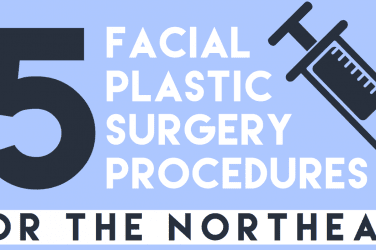Acne scars are the bane of acne sufferers everywhere. When acne leaves its mark, it doesn’t just disappear – it leaves behind an acne scar. There are various kinds of acne scars, but they can all be treated in ways that will make them less noticeable to the naked eye.
This is where acne scar removal treatments come in handy. Such treatments can be semi-invasive or not invasive at all! You just have to consult with a reliable dermatologist to inquire about the different types of acne scar removal treatments.
But, it would be best that you know first what kind of acne scar you are dealing with. This article discusses five different types of acne scars and how to treat each type respectively. This way, your dermatologist will easily determine what type of acne scar you have and what may be the cause.
Boxcar scars
The first type of acne scar is the boxcar acne scar. These scars are usually wide and shallow, giving them a “boxy” appearance when they show through the skin. They can also be raised or pitted above the surface of your skin if you have severe acne that leaves large holes in your dermis (the second layer beneath your skin). If these types of acne scars appear on your face or upper torso, microdermabrasion may help to smoothen out some of their rough edges and make them less visible.
Here’s how to treat Boxcar scars:
Fractional lasers work well for this type because they create tiny columns under the surface of the skin where collagen has been stimulated, creating an even texture across any acne scars left behind by inflamed blemishes. Another way to treat Boxcar scars is fillers. These are injected into acne scars to plump them up, making their edges less visible.
Rolling scars
The second type of acne scar is the rolling acne scar. These types of scars are usually wide and shallow as well, but they aren’t always raised above the surface like boxcar acne scars can be. They look more like hills and valleys across your skin, which give them their “rolling” appearance on different parts of your body (usually upper arms).
Here’s how to treat Rolling scars:
The best way to treat these types of acne scars is with fractional lasers because multiple laser treatments will stimulate collagen production in order to smooth out those bumps that make this particular kind of acne scarring so visible.
Rolling acne scars may also benefit from fillers – injecting botox into some areas where you have particularly deep indentations might help plump up the surrounding tissue enough to make acne scars less visible.
Hypertrophic Scars
The third acne scar is called hypertrophic acne scar. Like boxcar and rolling acne scars, these are usually raised above the surface of your skin due to a loss of collagen in that area. However, they’re not as wide or shallow as those other types – instead, they tend to be more like small lumps with slightly rough edges all around them (making it hard for makeup to smooth out).
Here’s how to treat Hypertrophic scars:
An easy way to treat hypertrophic acne scars is by filling them up with fillers such as Juvederm. This will plump up the surrounding areas, which may help reduce their visibility on the face or body. Laser treatments work well for this type because there can still be collagen production to make acne scars less visible.
People experiencing hypertrophic acne scars are also great candidates for dermabrasion. That is because the treatment can sand down the edges of the acne scarring, giving them a smoother appearance overall.
Keloid Scars
The fourth acne scar is called a keloid. These acne scars are usually raised above the surface of your skin, but unlike hypertrophic acne scars, they’re often very bumpy and can be soft to touch (which makes them more prone to bleeding if you accidentally cut yourself).
Here’s how to treat Keloid scars:
These types of acne scars respond best to laser treatments that create tiny columns under the surface of the skin where collagen has been stimulated, creating an even texture across any acne scars left behind by inflamed blemishes. Laser resurfacing works well for this type as well because it will remove some layers of your top dermis, which may reduce its appearance on your face or body. Again, fillers work great for this acne scar type as well because they can plump up the surrounding tissue, making acne scars less visible.
Ice Pick Scars
The third type of acne scar is the ice pick acne scar which is deep – almost penetrating your skin. These kinds of acne scarring are usually small because they’re formed when inflammation pushes through open pores, creating a channel that goes right down into your dermis (the second layer beneath your skin). Ice pick scars can be quite challenging to treat because there isn’t much tissue left behind for fillers or lasers to work with.
Here’s how to treat Icepick scars:
Since these types of acne scars have very little volume in comparison with other kinds of acne scarring, collagen injections won’t help as much as they would on some other kinds of acne scarring. However, dermabrasion can sand down the sides of icepick acne scars to create a smooth surface, reducing its appearance and making it less visible.
Main Photo by Ivan Samkov.







